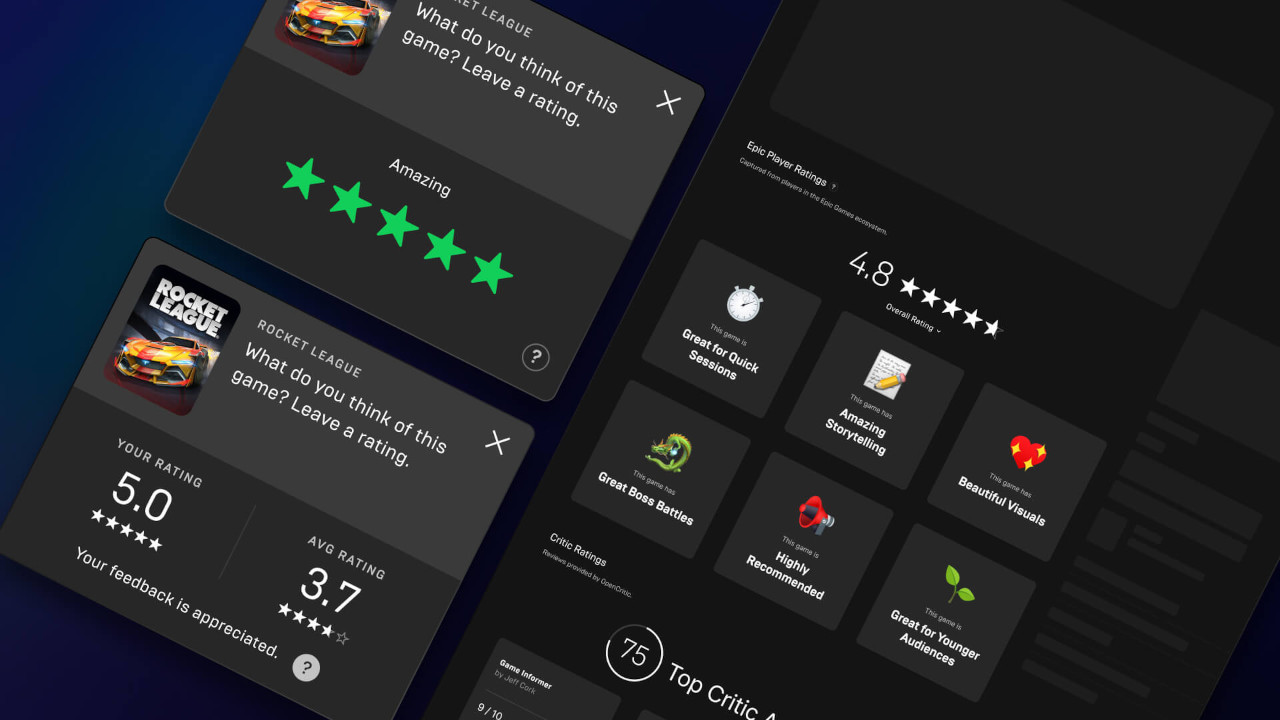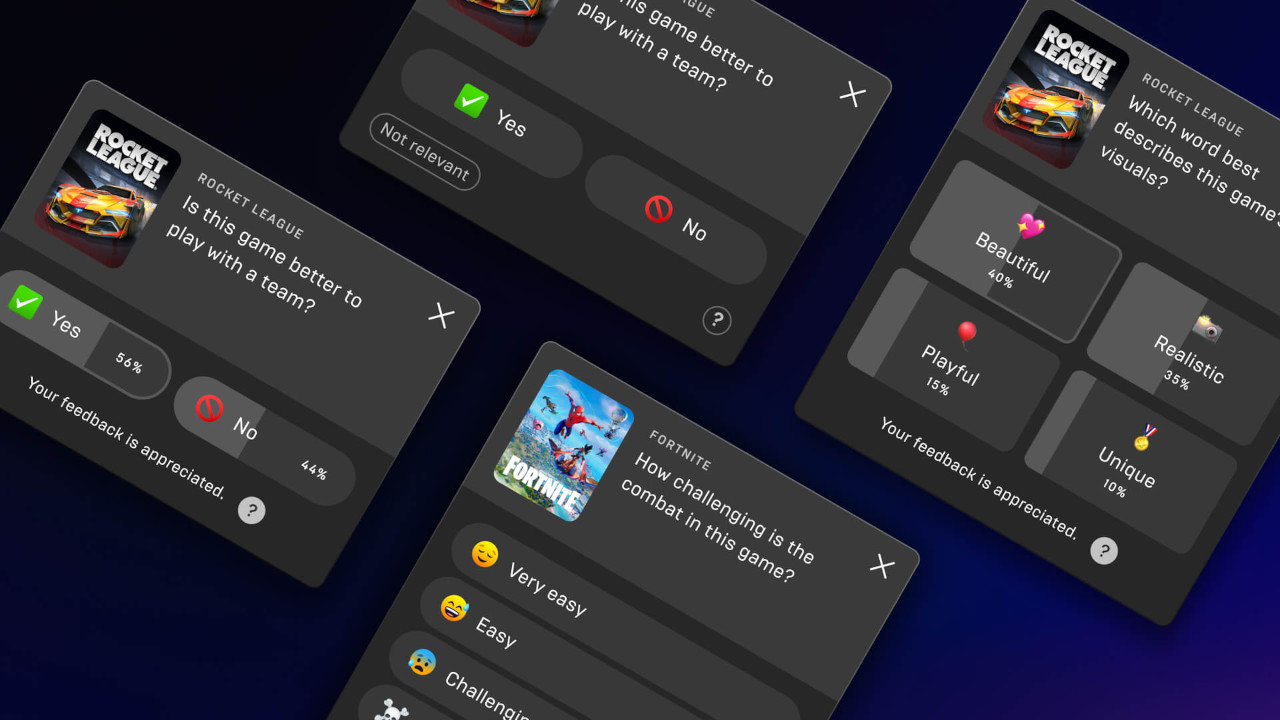Platform exclusivity is a modern practice in video game publishing, with specific titles being moved to the Epic Games Store away from Steam, but that doesn’t mean they’re totally out of reach for Steam Deck. Unfortunately, Epic still doesn’t offer an official Linux installer for its platform, making it a little tricky. Still, we’ve got an easy guide you can follow for two methods of installing Epic games on Steam Deck.
Before we get started, you need to know that any apps or games installed outside the official Steam Deck store will be on the console’s internal storage, not your microSD card or other external drives. Check that you have enough free space on the Steam Deck SSD, the size of which depends on which Steam Deck model you chose (64GB, 256GB, or 512GB.)
How to install Epic games with Heroic
The fastest way to access the Epic Games Store is by using the community-made open-source game launcher, Heroic. Designed for Linux, it’s compatible with Steam Deck and includes support for GOG Galaxy games too. For now, we’ll focus on using it to install Epic Games with some super-simple steps.
How to install Heroic Games Launcher

Heroic can be downloaded as a Flatpak archive on Flathub from any Linux PC. Luckily, it’s easier to find and install using the Steam Deck, skipping a lot of manual work and getting straight to the games.
- Hit the left-side STEAM button to open the quick menu.
- Navigate down the list to highlight and select Power.
- On the power menu, navigate to and select Switch to Desktop.
Alternatively, you can briefly hold down the power button to access the power menu a little faster. A Switching to Desktop … notification will appear whichever method you choose. After a short wait, the Steam Deck will boot into its Linux desktop environment, just like you would expect on any regular PC.
- Locate and open the Discover app, which is usually pinned to your taskbar with an icon resembling a blue shopping bag. Otherwise, you can find it in the System tab of the applications menu.
- Using the search function in the top-left of Discover, look for Heroic Games Launcher.
- Find Heroic Games Launcher in the list of results and hit Install.
Heroic is great for launching games through Epic, but booting into the desktop mode whenever you want to play them isn’t too efficient. You can take a few additional steps to have them appear in the library of your Steam Deck alongside your usual purchases.
- Return to Steam in desktop mode. Navigate the top-most menu to the Games tab and select Add a Non-Steam Game to My Library …
- A new window titled Add a Game will appear with a list of your software. Navigate this list until you find Heroic Games Launcher.
- Check the box to the left of its title, then hit Add selected programs.
- Close the Steam application and launch the Return to Gaming Mode shortcut from the desktop or applications menu.
Back in the SteamOS Deck UI, you can find Heroic Games Launcher in the non-Steam game category and use it to install any Epic Games Store title from your account as usual. The downside to using Heroic is you won’t have any information on compatibility like the list of Steam Deck verified games, so be prepared to troubleshoot any problems yourself. It’s undoubtedly the easiest way to access your purchased Epic games on Steam Deck until they perhaps one day return to the Steam platform.
How to manually install Epic games
Suppose you want complete control over everything happening on your Steam Deck. In that case, you can manually install the Epic Games Store by using the Proton compatibility layer and treating it like a non-Steam game. It’s easier than it sounds, and I’ll break everything down for you in easy-to-follow steps.
How to install the Epic Games Store
- Hit the left-side Steam button to open the quick menu.
- Navigate down the list to highlight and select Power.
- On the power menu, navigate to and select Switch to Desktop.
Alternatively, you can briefly hold down the power button to access the power menu a little faster. A Switching to Desktop … notification will appear whichever method you choose. After a short wait, the Steam Deck will boot into its Linux desktop environment, just like you would expect on any regular PC.
- Open Firefox (or your preferred web browser) from the taskbar or applications menu and navigate to the official Epic Games Store website.
- Hit the blue download button to grab the Windows .msi installation file, usually located in the top-right corner of the page.
Alternatively, you can download the EpicInstaller on a separate desktop computer and transfer the file to your Steam Deck via microSD or other methods. Note where the .msi file is located, usually in the default Downloads folder if you used Firefox.
- Launch the Steam application from your desktop or the applications menu while still in desktop mode.
- Navigate the top-most menu to the Games tab and select Add a Non-Steam Game to My Library …
- A new window titled Add a Game will appear with your software list. Ignore the listed apps; instead, hit the Browse … button at the bottom.
- Navigate to the folder containing the “EpicInstaller” file you downloaded earlier and change the File type filter from Applications to All Files; otherwise, it will remain invisible.
- Select the installation file, then hit Open to have it appear with a checkmark in the Add a game window, then hit Add selected programs.
If you cannot see the EpicInstaller .msi file in its folder, make sure you have changed the File type filter to All Files. Steam Deck defaults to *.desktop extensions, so SteamOS will not recognize Windows installers unless you change this filter.

- Highlight and right-click (left touchpad) the EpicInstaller in your library on Steam desktop mode and hit Properties.
- On the left-side menu, select Compatibility and check Force the user of a specific Steam Play compatibility tool.
- From the drop-down list, select the most recent stable build of Proton, rather than Proton Experimental, to reduce the likelihood of bugs and crashing.
- Launch EpicInstaller from the non-Steam games category in the desktop version of Steam and follow the instructions to install the software to its default location. The installer will disappear upon completion.
Adjusting the installation
So far, you’ve successfully installed the Epic Games Store into the filesystem of your Steam Deck. However, it won’t open without one extra step to locate and launch it with the Proton compatibility layer. The file we just ran is designed for Windows, and the brains behind your console run on Linux, so we need to tell Steam where to find the installation directory.
Open the Dolphin file manager from the taskbar or applications menu and navigate to the following directory: Home/.local/share/Steam/steamapps/compatdata
Here, you’ll see a collection of folders named as strings of numbers. These folders are the applications and games installed on your Steam Deck, so you need to figure out which one is the Epic Games Store we just installed. Thankfully, it shouldn’t be too difficult to find since non-Steam apps have a much higher number than official games, so start at the folder with the longest number and search for the following directory:
…/pfx/drive_c/Program Files (x86)/Epic Games/Launcher/Portal/Binaries/Win32
Once you’ve found it, you should see it contains the EpicGamesLauncher.exe file we need to complete our installation.
- Inside the Dolphin file manager, right-click (left touchpad) the EpicGamesLauncher.exe file and hit Copy Location.
- Back in the desktop version of Steam, right-click EpicInstaller and hit Properties.
- Clear the Target field and paste (STEAM+X opens an on-screen keyboard) the location we just copied. This shows Steam where the .exe file is located.
- Clear the Start in field and paste the same, but this time delete the EpicGamesLauncher.exe text from the end, so it ends with /Win32. This shows Steam where the Epic Games Store directory is located.
These last steps might seem picky, but they explain to Proton where the Windows installation of Epic Games Store is located within your Steam Deck. Thankfully, you’re all done with the hard part. If you’d like to make things look a little nicer, you can rename the EpicInstaller to something cleaner like Epic Games Store within the same right-click Properties menu you used on the Steam desktop version.
How to install games

We’re at the easiest part of this manual installation method now that Epic Games Store is fully installed. Restart your Steam Deck into the regular SteamOS Deck UI, find the Epic Games Store in the non-Steam game category, and launch it as you would for any regular game. The pop-up notifications mentioning free games and special offers can cause issues with the screen resolution, so consider disabling those under the Desktop notifications section in the Epic Games Store settings menu.
And that’s all you need to do. Unfortunately, this does not circumvent the anti-cheat system of games within the Epic Games ecosystem, so you won’t be able to play multiplayer games that Steam Deck doesn’t officially support. It is a fantastic method of accessing more singleplayer games on your Steam Deck, even if some will need some of the best Steam Deck accessories to be enjoyed thoroughly due to a lack of official joypad support.




